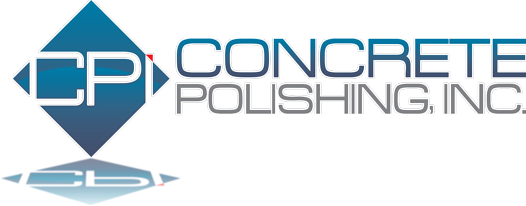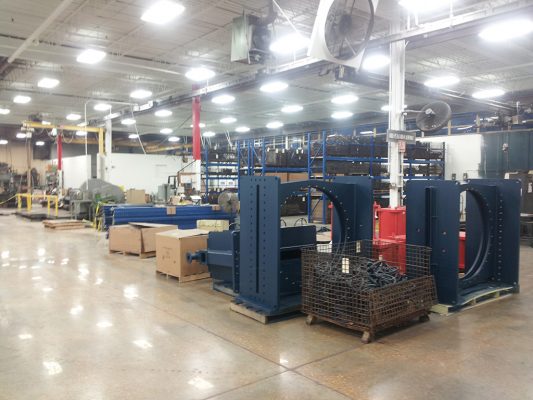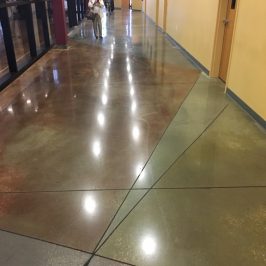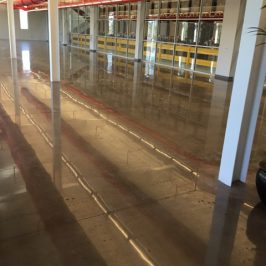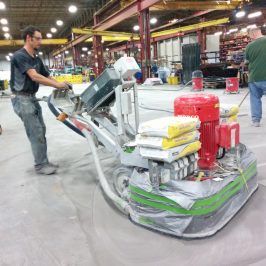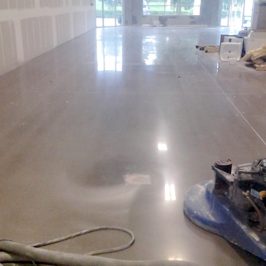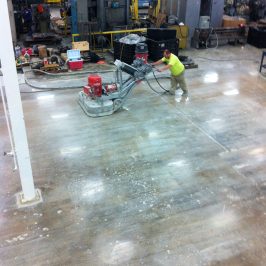So how messy is the mechanical concrete polishing process? Really there are two different answers. It all depends on whether circumstances require a wet or dry grinding process.
Wet grinding uses water to control the dust. The byproduct is slurry. Slurry is removed to a hopper or drying bin where it turns to dry dust and can be disposed as non-hazardous waste, the same as any common dust. Wet grinding keeps nearly 100% of the dust from entering the air.
Dry grinding uses powerful vacuum cleaners to suck the dry dust from underneath the shroud of the concrete grinding machine as it is produced. Up to 99% of airborne dust is captured this way. However, there is often small amounts of airborne dust that settles onto surrounding areas.
Both grinding processes create waste, whether wet slurry or dry dust. For highly sensitive areas the preference is usually wet grinding. However, typical environments allow for dry grinding and the accompanying surface and airborne dust.
The benefits and advantages of mechanically polished concrete are significant, whether commercial office spaces, warehouses, factories, or industrial spaces. The costs are low, particularly the long-term costs, and CPI even has some option recommendations to keep costs down to a minimum. But every business, even those in our national client list, has their own best use for polished concrete.
For more specific information about your particular situation please email or call (888-610-6656) Concrete Polishing, Inc. for more information about making the right decision for your factory or industrial space.
